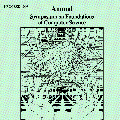We study the problem of approximating the edit distance of two strings in sublinear time, in a setting where one or both string(s) are preprocessed, as initiated by Goldenberg, Rubinstein, Saha (STOC '20). Specifically, in the $(k, K)$-gap edit distance problem, the goal is to distinguish whether the edit distance of two strings is at most $k$ or at least $K$. We obtain the following results: * After preprocessing one string in time $n^{1+o(1)}$, we can solve $(k, k \cdot n^{o(1)})$-gap edit distance in time $(n/k + k) \cdot n^{o(1)}$. * After preprocessing both strings separately in time $n^{1+o(1)}$, we can solve $(k, k \cdot n^{o(1)})$-gap edit distance in time $k \cdot n^{o(1)}$. Both results improve upon some previously best known result, with respect to either the gap or the query time or the preprocessing time. Our algorithms build on the framework by Andoni, Krauthgamer and Onak (FOCS '10) and the recent sublinear-time algorithm by Bringmann, Cassis, Fischer and Nakos (STOC '22). We replace many complicated parts in their algorithm by faster and simpler solutions which exploit the preprocessing.
翻译:我们研究在亚线性时间里,一个或两个字符串被预处理,由Goldenberg, Rubinstein, Saha(STOC'20) 启动的设置中,两个字符串的编辑距离接近编辑距离的问题。具体来说,在美元(k, K) $- gap 编辑距离问题中,目标是区分两个字符串的编辑距离是最多为美元,还是至少为美元。我们取得了以下结果:* 在以时间处理一个字符串后,一个或两个字符串被预处理,如Goldenberg, Rubinstein, Saha(STOC'20) 。具体地说,在美元(k, K) $(k) $(K) $(K) $(K) $(K) ) $(o) +o(l1) 美元(t 美元) 美元(t $(k, k) 美元(o) 美元(o) $(cdo) $(c) o(lickral) i(l) (l) (lickrus) ro) ro(t) ro) ro) ro) 和(ro) ro(ro) ro) ro(c) ro) ro) ro) rol) ral) (在时间框架中, 之前 和(x) 和(x) ro) 和(xl) ro) ro) ro) ro) 。




